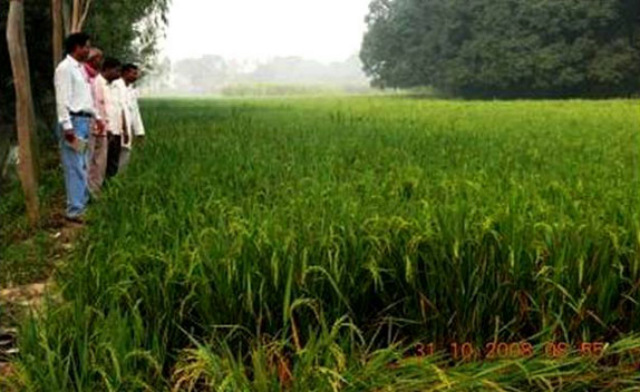SUMMARY
This is AI generated summarization, which may have errors. For context, always refer to the full article.

LAGUNA, Philippines – Indian farmer Asha Ram Pal stood in the middle of his field past noon on July 31, 2008, torn after a flood submerged his rice plants for more than two weeks.
The farmer faced a dilemma: Is it time to plow up his field?
Experience shows it might be a hopeless case. Rice plants “normally die within 4 days when submerged,” according to a briefer from the International Rice Research Institute (IRRI).
For Pal, it didn’t help that fellow farmers mocked him. Weeks before the flood, after all, he decided to try a new type of rice seeds from IRRI. While other farmers remained unconvinced, he used these seeds because IRRI made a promise: This new variety, called the Swarna-SUB1, can survive the worst of floods and even give farmers high yields.
The flood “was so severe,” however, that it damaged the shoots or upper portions of his rice plants. “When we looked at it at the beginning, there was nothing there…. So the farmers started laughing at him and asked him, ‘Just plow up the land, plow it again,’” IRRI scientist Dr. Abdelbagi Ismail told a group of journalists at the IRRI headquarters in Los Baños, Laguna, on May 9.
“We told him, ‘Don’t do that, just wait,’” said Ismail, a coordinator at IRRI’s Crop and Environmental Sciences Division. “And he listened to us.”
Three months later, on October 31, 2008, IRRI found that Pal got “the highest yield in their village” while the other farmers, who planted again, “did not even get half of his yield.”

IRRI said rice-consuming and flood-prone countries – such as India, the Philippines, and Bangladesh – need similar “climate-smart” varieties. (READ: How climate change threatens our food security and El Niño-ready rice recommended for farmers)
‘Like an app’
The science behind these is like using a smartphone app, said Dr. Glenn Gregorio, deputy head of IRRI’s Plant Breeding, Genetics, and Biotechnology Division.
The “app” is any desirable trait in a rice variety.
IRRI, then, incorporates “specific desirable traits into new varieties with more accuracy and speed” through a method called marker-assisted breeding.
The trait that worked, in Pal’s case, allows a rice plant to resist prolonged submergence in floodwater. IRRI said the gene called SUB1 gets activated “when the plant is submerged,” as it makes the plant “dormant” and “conserves its energy until the floodwater recedes.” (Watch more in IRRI’s video below)
Ismail said IRRI explains it to farmers this way: “What we do is, we move the good traits for tolerating or being able to withstand this stress from your old varieties that are low yielding, into the new varieties that are high yielding and with better quality.”
Ismail however added, “The best way to explain anything to the farmers is to demonstrate it.”
He said Pal – who eventually sold seeds to the farmers who mocked him – is “very happy.”
‘Entry point’ vs poverty
The impact of climate-smart rice goes beyond individual farms.
On May 10, The Economist reported that climate-smart rice is spurring a “second green revolution.”
The first green revolution, The Economist noted, “helped save the developing world from disaster.” This happened after two plant breeders “persuaded governments in Asia and elsewhere to encourage the planting of higher-yielding varieties, especially of rice” beginning in the early 1960s.
The leading magazine said the second green revolution “should complete the first one, mainly by bringing benefits to the poorest, who missed out first time round.”
This development “will depend on the technology working as promised and, in particular, on public policies that support a second green revolution,” The Economist said.

Gregorio also said rice with “apps” can help the poorest communities.
Increasing rice yields, he explained, will allow farmers to free up parts of their fields for other purposes. “You could put your goat there, you could put your fishpond there, you could put vegetables, so it’s more productive.”
“Rice will be the entry point to escape from poverty,” he said. – Rappler.com
Add a comment
How does this make you feel?
There are no comments yet. Add your comment to start the conversation.